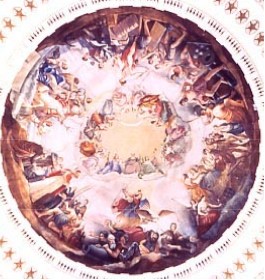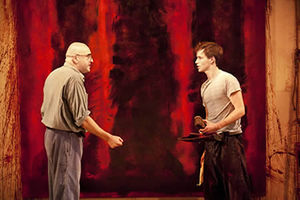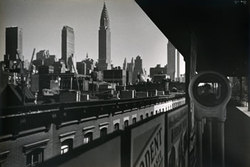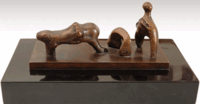Architectural bloggers are suddenly talking about the soon-to-be-opened Centre Pompidou-Metz, in Alsace-Lorraine. So naturally I went looking for pictures — a little eye candy. Here are a few:
 The building looks “interesting,” shall we say? Early commentary insists that it will be fine as galleries, but the discussions so far have been larded with the adjective “incredible,” which leads me to believe that some press release somewhere used that description and bloggers/writers are going along.
The building looks “interesting,” shall we say? Early commentary insists that it will be fine as galleries, but the discussions so far have been larded with the adjective “incredible,” which leads me to believe that some press release somewhere used that description and bloggers/writers are going along.
Three long, adjoining galleries that provide 54,000 sq ft of exhibition space sit under that spired roof, which some have compared to a Chinese hat. They are situated at slightly different levels, but are bridged somehow. Each one juts out through the roof via a glass-walled window, providing different views of the city. At the center of the building, which will be surrounded by a terrace and sculpture gardens, is an atrium. The building also incorporates an auditorium, gift shop, resource center, cafe and restaurant.
 Centre Pompidou-Metz opens in May with the exhibition, Chefs d-Ouevre?, described as follows:
Centre Pompidou-Metz opens in May with the exhibition, Chefs d-Ouevre?, described as follows:
Chefs-d’Å“uvre? looks at the notion of the masterpiece, past, present and future. Is this notion still relevant today? Who decides what is a masterpiece and what isn’t? Once a masterpiece, always a masterpiece?
…Of the 780 works on show, 700 have been loaned to the Centre Pompidou-Metz by the Centre Pompidou. Some have rarely been loaned before, such as Calder’s Josephine Baker IV, Klein’s Grande anthropophagie bleue (ANT 76), and Picasso’s Woman with Red Head. The exhibition also includes specially-commissioned pieces by contemporary artists.
More information at the website.
Photo Credits: Courtesy Centre Pompidou-Metz

 The Mural in America
The Mural in America 

 As the MWO literature says, “
As the MWO literature says, “